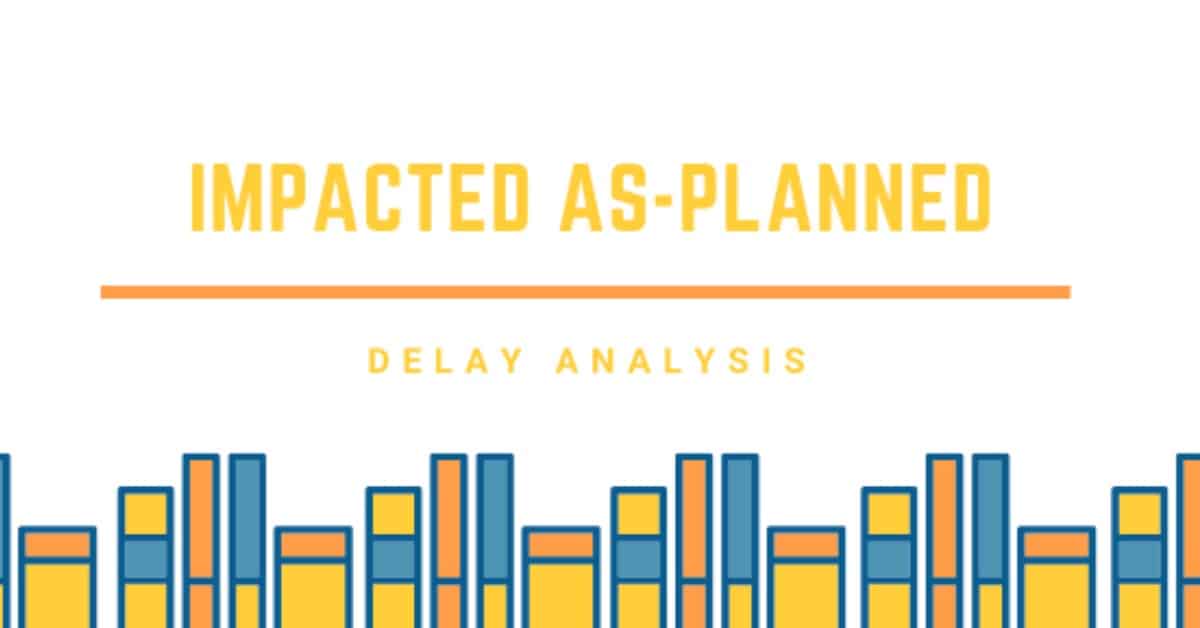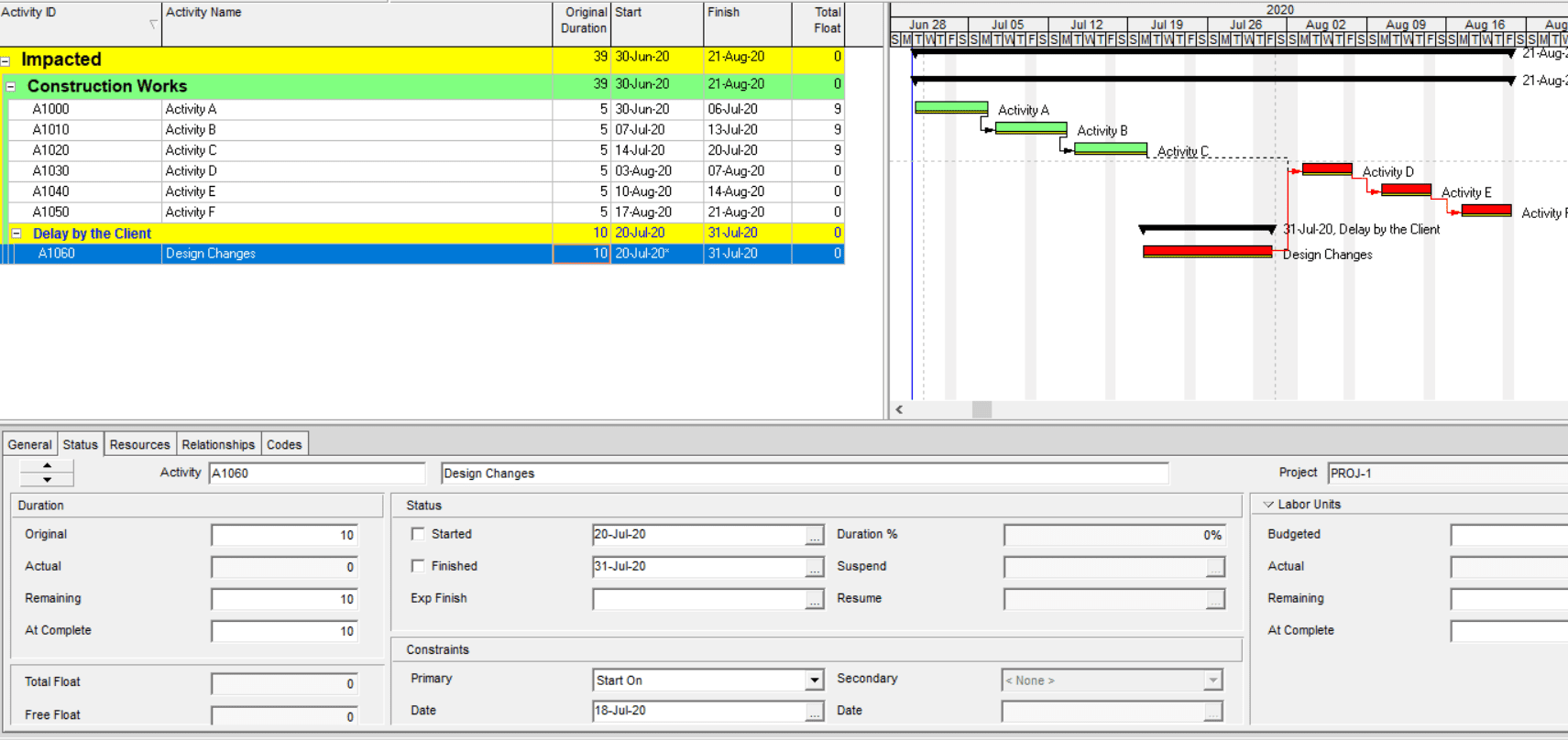Construction projects are frequently delayed for a variety of reasons, which can have a significant financial impact on the project. As a result, claims for delay may be filed. One of the most difficult types of claims analysis is the analysis of the delay impact, the causes, and effects of the delaying activities.
To conduct the analysis, an expert with extensive knowledge of construction projects, means and methods, scheduling, and the ability to develop a sound methodology is needed. How to perform Impacted As-planned delay analysis is one of the interview questions for planning engineer.
What is the impacted As-Planned Delay Analysis Method?
The impacted as-planned method of delay analysis is a technique that predicts or predicts the delay in the completion date of the project. This delay analysis method involves the inclusion or addition of activities that represent delays or changes to the baseline schedule in order to determine the impact of these delay activities.
The use of the method of analysis of the impacted schedule as planned is generally limited to the quantification of delays for contemporary time extension requests.
Implementation of the impacted as-planned delay analysis includes defining project delays or changes and then incorporating or adding to the baseline construction schedule activities that reflect such delays or changes. The resulting schedule shows the effect of the delays or modifications on the completion date of a project.
It should be noted that the selection of a suitable methodology for schedule delay analysis has several important considerations.
Each claim is unique and addresses, among other factors, various contract requirements, situational contexts, documentation levels, complexities, legal jurisdictions, and forums for dispute resolution. The selection of a particular approach for the delay analysis should be based on qualified judgment and careful empirical study and evaluation.
How to Perform the Impacted As Planned Delay Analysis?
This method of assessing a delay is to determine the hypothetical effect on the baseline schedule of the delay events. It is a ‘prospective’ method of analysis which means it refers to the future and aims to determine the likely impact of a particular event(s) on the completion of a project.
The contractor superimposes the delay events into the baseline schedule, linking them adequately and recalculating the schedule. The consequent effect of the events on the date of completion is then said to be the crucial impact of the delay.
- The contractor has to establish that the baseline schedule has been achievable. When that is not true then the calculated delay may not be right, since some or all of the calculated delay is inevitable.
- The contractor must ensure that the programme is appropriate for dynamic simulation. This means that it will involve the calculation of the schedule by simulation using computers and software. If the schedule is not capable of dynamic simulation, the contractor must make adjustments to the logic of the schedule and, in particular, replace the constraints applied in order for the activities to react appropriately during the analysis.
- The contractor must determine the nature, extent, and relationship of the delay event to be established so that it can be properly linked to the schedule.
How to Perform the Impacted As Planned Delay Analysis in Primavera P6
The Impacted As-Planned delay analysis method measures the impact of the delays on the As-planned programme. The delays are formulated as activities and added to the As-planned schedule showing the effect of each delay and demonstrating how the project is being delayed. The amount of delay equals the difference in project completion dates between the schedules before and after the impacts.
- Following is the As Planned Schedule (Baseline Schedule)
- We will insert the Delay event into our schedule. Enter the Original Duration of the delay, then Assign the right successor (which activity the delay will affect).
- For example, the Original Duration of the “Design Changes” delay is 10 days. And it will affect the “Activity D”. and add a Constraint for the event date and here the delay event date is 18 July 2020
Then, you can calculate the total Extension of Time which will be 39– 30= 9 days.
The formula used is (Original Duration of Impacted Schedule – Original Duration of the Baseline) or (Project Finish Date of Impacted Schedule – Project Finish Date of Baseline)
Recommended Resources
Consultant Requirement for EOT Claim
High-rise towers EOT Claim (XER + Narrative)
Residential Project EOT Claim (XER + Narrative)
See Also
As Planned vs As Built Delay Analysis
MEP Works in Construction
PMP Project Management Plan












